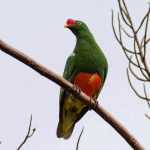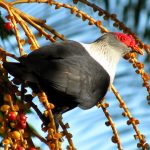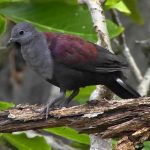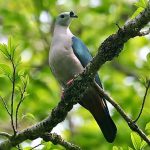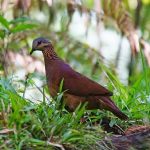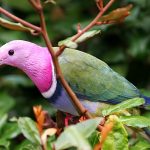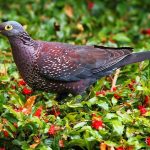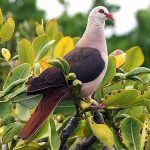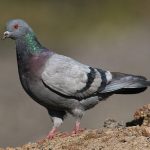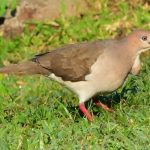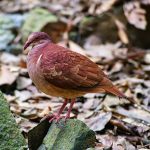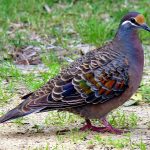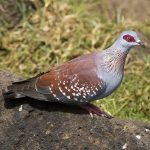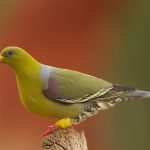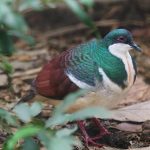Namaqua dove
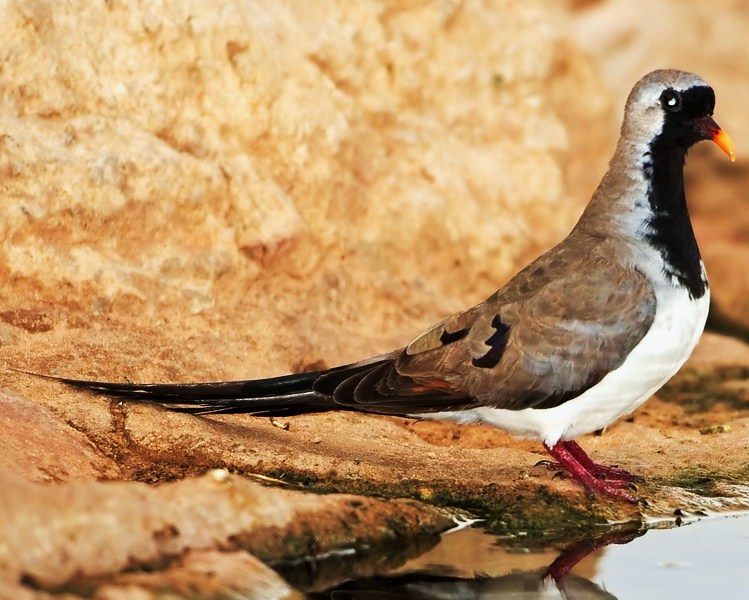
Oena capensis
 |
| (Photo from Aprafoga) |
Common name:
Namaqua dove (en); rola-rabilonga (pt); tourtelette masquée (fr); tórtola de Namaqua (es); kaptäubchen (de)
Taxonomy:
Order Columbiformes
Family Columbidae
Range:
This species is found throughout sub-Saharan Africa, including Madagascar, only being absent from the lowland forests of West Africa and the D.R. Congo. They are also found in the Middle East, in Israel, Jordan, Iraq and across the Arabian Peninsula.
Size:
This tiny dove is 22-25 cm long and has a wingspan of 28-33 cm. They weigh 40 g.
Habitat:
Namaqua doves are found in dry, open areas, namely Acacia savannas, arid scrublands, agricultural areas, farmyards, rural gardens and occasionally alien tree stands.
Diet:
These birds are granivorous, eating small seeds on various grasses, sedges and weeds, namely Amaranthus, Aridaria and Chenopodium.
Breeding:
Namaqua doves can breed all year round, with a peak in July-December. Both sexes build the nest, a fragile saucer made of rootlets, twigs and petioles, with the inside lined with grass and rootlets. The nest is placed in an Acacia sapling, scrub, dead branch or occasionally a grass tuft, generally about 1 m above the ground. The female lays 1-2 cream-coloured eggs, which are incubated by both sexes for 13-16 days. The chicks fledge 16 days after hatching.
Conservation:
IUCN status – LC (Least Concern)
This species has an extremely large breeding range and is described as common to abundant. The population is suspected to be increasing in abundance and expanding its range in, for example, Israel and Arabia, since the mid-1970s. This species is often the target of illegal capture or the pet trade, but overall the species is not considered threatened.
